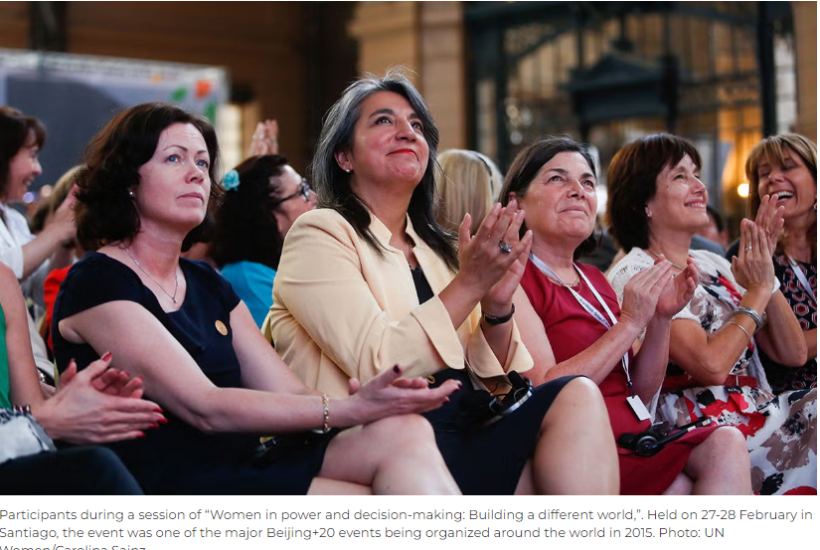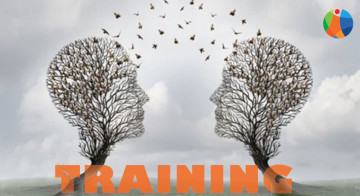We are living in a time of great disruption characterized by a crisis in all human activities. At the same time, over the last decade we observe that old quarrels and disagreements over territorial, economic, ethnic and religious issues are rekindled while human rights and especially girls and women’s rights have not progressed.
Even though we had the biggest electoral years in recent history, more than 107 countries have never had a woman Head of State. In 2024, women held only 27 percent of seats in national parliaments and 35.5 per cent of seats in local governments.
Women’s political participation is critical for a well-functioning democracy. Their inclusion is a matter of justice and a key factor in creating more effective governance. Having more women in policymaking has shown to help advance legislation on crucial issues, such as health, education, childcare, infrastructure and ending violence against women and serve as an inspiration for girls to pursue higher education and career opportunities.
Yet, women’s voices are missing from decision-making in every region of the world.
Still too few women in decision-making
The most significant gap in women’s political representation is found at the highest levels of power. Today, only 27 countries are led by a woman, a modest increase from just 18 countries a decade ago, and 107 countries have never had a woman leader.[1]
Women make up only 23 per cent of cabinet members heading ministries worldwide, and just 15 countries have cabinets with parity between women and men. In 141 countries, women hold less than one-third of cabinet minister positions, and seven countries have no women represented in their cabinets at all. At the current rate of progress, gender parity at the cabinet level will not be reached before 2077!!
Globally, representation of women in parliaments stand at 27 per cent and parity is not expected to be achieved for another 39 years.
At the local level, women constitute 35.5 per cent of elected members as of 2024.
Barriers to women’s political participation
While women’s rights to political participation have been reaffirmed by international agreements for decades—including in the Beijing Platform for Action and the Sustainable Development Goals—implementation lags as barriers to women’s political leadership persist globally.
Harmful norms and gender-based violence hinder women’s political rights, and stereotypes in the media perpetuate the idea that women are less legitimate and capable leaders than men.
Online threats of death, rape, and physical violence against women in politics and public life have become alarmingly common, and the rise of artificial intelligence may further intensify the scale and reach of such online abuse.
When UN Women conducted surveys of women office-holders in local councils in Jordan, Lebanon, Nepal, the State of Palestine, and Tunisia, survey respondents revealed that psychological violence was the most widespread form of harassment they faced, followed by sexual violence and economic violence—such as being denied access to resources such as salaries, office space, and equipment. Women office-holders reported encountering harassment most frequently within the local government institutions where they served, with additional incidents occurring in their communities and at home.
Additional barriers include political parties’ resistance to including women as leaders and candidates, and winner-takes-all electoral systems that make it difficult for women to compete on an equal footing with men.
Women also often have less access than men to the resources necessary for successfully seeking a party nomination or running in an election. This includes limited access to financial networks and political patronage. In developing countries, the inability to afford even modest candidate registration fees can exclude women from participating in the electoral process.
Five actions governments can take to increase women’s political participation
Every election presents an opportunity to boost women’s participation and advance gender equality and women’s rights. The following actions can help bring lasting change:
- Use special measures, such as legislated gender quotas and gender-balanced appointments
Around the world, gender quota legislation has been shown to effectively enhance women’s participation. In countries with mandated parliamentary quotas, women hold an average of 26 per cent of parliamentary seats, compared to 21 per cent in countries without such quotas. Similarly, countries with legislated quotas for local elections see women’s representation increase by an average of seven percentage points over those without quotas.
However, the potential of quotas is often not fully realized, with targets frequently set below 50 per cent and implementation mechanisms lacking or weak. While 94 countries have introduced gender quotas for parliaments, only one-fifth of those countries have set a target of 50 per cent for women’s representation.
2. End violence against women in politics
Violence hinders women from exercising their rights to participate in political and public life and has wider consequences for societies: it undermines public institutions, weakens policy outcomes, and impedes progress in peace and development. Governments must pass and enforce laws and policies to prevent violence during elections and beyond, to hold perpetrators accountable, and strengthen access to justice and services for victims. To better address online violence against women in politics, governments should collect data on such harassment and hold media and social media companies accountable.
3. Ensure the equal treatment of women voters, political candidates, and electoral administrators
Electoral management bodies and other relevant stakeholders should develop and implement inclusive policies and codes of conduct that promote non-discrimination, integrity, transparency, freedom from violence, and dispute resolution. To uphold women’s rights to vote, governments must facilitate voter registration, guarantee security at polling stations, and protect women from coercion or intimidation. Involving women in election administration enhances the inclusiveness and credibility of elections and encourages more women to vote.
4. Support women candidates and representative decision-making
Governments must invest in capacity-building programmes for women candidates to develop their leadership and campaigning skills, and regulate campaign financing to allocate targeted funds for women candidates. Governments should consider regulating campaign financing to encourage political parties to allocate targeted funds for women candidates and their campaigns. This approach would help bridge the financing gap and promote equal participation in politics.
5. Encourage fair and transparent media coverage of women’s political participation
Laws governing election media coverage are essential for regulating electoral processes and ensuring informed public participation. Such laws should ensure balanced coverage of all candidates, guarantee media access for all political parties, prohibit hate speech and rhetoric that incites violence, discourage gender stereotypes and discrimination, and protect against violence towards women and other underrepresented groups. Additionally, independent oversight of these regulations should be established, along with sanctions in cases of violations.
The Conditioning of the Space of Representation(2)
In the book, From Monkey Sapiens to Homo Intentional, Silvia Swinden explains how human beings are immersed in the structure of the world and emphasizes that consciousness can only be perceived by becoming aware of the space of representation and its underlying mechanisms.
In short, she explained how the space of representation conditions our perceptions and our view of the world.
In fact,the barrier to women is clearly identified by the conditioning of the space of representation which is characterized by the domination of patriarchal representation and pyramidal forms.Theses forms have conditioned the space of representation of the human beings for thousands of years and obscured certain characteristics and virtues of half of the humanity. Consequently it leads to the blocking of human intention and the freedom of choice of women.
Thus, women’s demands during the 1960s helped to fight against the multiple forms of oppression they had been facing for centuries. But today, it’s mostly the conditioning of the space of Representation that generated barriers to women’s participation in politic
Furthermore, the blocking of certain characteristics of half of the human species limits the creative capacities of being in the world of the entire human species.
The conditioning of women and men to a way of being in the world limits them in their progression. In short, the subject-consciousness-world structure of men and women that has persisted for millennia limits the possibilities of amplification of the space of representation in order to resolve increasingly complex problems and situations in this present moment.
We are about to leave our world and go to other planets, we are about to set up an artificial intelligence that will far surpass our own intelligence.
But for millennia we have been dragging with us forms and behaviors that lead us to a chain of actions and reactions that generated discrimination against half of humanity. These actions and reactions enchained our senses, memory and consciousness toward situations limiting our own capacities, they are determinism.
Since, these determinism conditions our perceptions and our view of the world, and generated forms and representations that belong to another time. Maybe it’s time to focus on solutions and discover how to overcome these determinisms so we will amplifythe space of representation as a species and leave this dark historical moment behind.
[1] UN Women calculation based on information provided by Permanent Missions to the United Nations as of 16 August 2024. Countries with monarchy-based systems are excluded from the count of Heads of State.
[2] Space of representation: is a kind of mental screen where images, formed from sensory stimuli, memory stimuli and the activity of consciousness are projected. In addition to serving as a screen, it is formed from all the internal representations of the kinesthetic sense. The space of representation has a volume and a depth that allow us to find, according to the location of the image, whether the phenomena come from the internal or external world. (source: Amman, 2004, p. 281)
Source: UN Women






